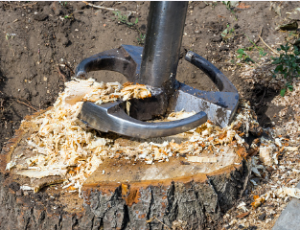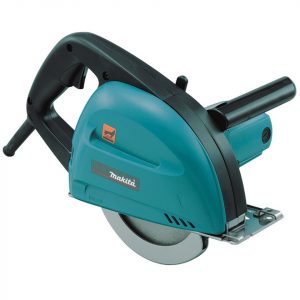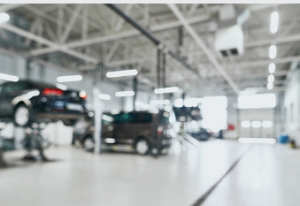The first step in tree stump removal is to remove the stump. It is done by digging up the stump and cutting it close to the ground. The stump is removed with a cutting wheel by moving slowly in sections and cutting the stump down to five to six inches below ground level. The area should be levelled with soil to replant plants, and wood shavings can be used as mulch. If you plan to replant the tree, you should use the stump removal procedure.
Cost of tree stump removal by hiring a professional
 A professional’s cost of tree stump removal depends on a few factors. One of them is the number of stumps in your yard. The price per stump will vary depending on the number of stumps and the contractor’s hourly rate. If you want more than one stump removed, lump them into one project to save money. Most professionals will offer a discount for lumping several stumps together. Visit www.stumpremovaladelaide.net.au for more details.
A professional’s cost of tree stump removal depends on a few factors. One of them is the number of stumps in your yard. The price per stump will vary depending on the number of stumps and the contractor’s hourly rate. If you want more than one stump removed, lump them into one project to save money. Most professionals will offer a discount for lumping several stumps together. Visit www.stumpremovaladelaide.net.au for more details.
Chemical-based stump removal costs $100 to $300 per stump. Some contractors may offer discounts if you have several stumps to be removed. The chemical-treated tree stump removal involves drilling holes into the stump and pouring chemicals into the holes. These chemicals contain sulphuric acid, nitric acid, or potassium nitrate. Some companies also use natural products to dissolve stumps. Once the tree’s roots begin to rot, the stump will be easier to remove.
Tools needed for tree stump removal
The many tools needed for tree stump removal are a digging iron, a sturdy spade, and a mattock. A spade with a mid-length handle is ideal for digging deeply and maneuvering around a dense root ball. On the other hand, a hatchet chops roots much like an axe and can help loosen compact soils. Lastly, a digging iron helps reach tight spaces and pry stubborn roots.
Tree stump removal is a difficult task due to the weight and size of a tree stump. While large stumps may require a professional to remove them, small ones can be removed by hand with the right tools and equipment. First, you need a chainsaw or other specialised equipment. Then, it would help if you drilled holes eight to twelve inches deep around the stump so that you could apply the chemical solution. Ensure you drill holes at 45-degree angles around the stump to avoid damage to surrounding surfaces.
Environmental impact of tree stumps
Despite the widespread practice of tree stump harvesting, the environmental impact of this activity is still poorly understood. While the practice of stump harvesting does not impact the atmosphere directly, it does negatively affect the carbon stored in soils. Consequently, further research is needed to understand the impact of tree stump removal on soil carbon balance and nutrient stock. Here are some of the significant environmental impacts associated with tree stump harvesting. Listed below are the most relevant aspects to consider before deciding whether tree stump harvesting is the right choice for your site.
In addition to the environmental impact of tree stump removal, the procedure may also reduce forest carbon stores and cause increased soil compaction and erosion. These factors, among other things, can harm future productivity. Further, the practice may reduce the diversity of insects and fungi found in forests. Additionally, it may lead to additional herbicide requirements. Therefore, tree stump harvesting should be done only when all the trees have been removed. Visit www.stumpremovaladelaide.net.au for more details.
Using kerosene for tree stump removal
Several options are available for burning stumps. One method uses diesel or kerosene to burn trees and is recommended for stumps that can take up to six weeks to burn. Kerosene is better suited for porous stumps, which will soak up the fuel for longer. After you’ve soaked the wood in kerosene, pour it over the stump and let it soak in. This method is safer than gasoline or motor oil, as both are highly explosive and produce toxic smoke when burned.
 When choosing a circular saw, deciding between a corded and cordless model isn’t just about portability. The cordless model is also easier to use in confined spaces and places where power isn’t readily available. However, it is important to note that cordless saws are not as powerful as corded models and therefore are less portable. While both types of saws have their advantages, their main difference lies in their capabilities.
When choosing a circular saw, deciding between a corded and cordless model isn’t just about portability. The cordless model is also easier to use in confined spaces and places where power isn’t readily available. However, it is important to note that cordless saws are not as powerful as corded models and therefore are less portable. While both types of saws have their advantages, their main difference lies in their capabilities. When dealing with a deceased estate, it’s important to remember that not all of the property is left to the beneficiary. Still, the estate executor should notify anyone interested in purchasing the property. If there is a beneficiary of the deceased estate, the executor may sell it to raise money for the family. You can refer to the Government Gazette for information on estates in other areas of the country. Responding to an estate advertisement is the first step in the winding-up process.
When dealing with a deceased estate, it’s important to remember that not all of the property is left to the beneficiary. Still, the estate executor should notify anyone interested in purchasing the property. If there is a beneficiary of the deceased estate, the executor may sell it to raise money for the family. You can refer to the Government Gazette for information on estates in other areas of the country. Responding to an estate advertisement is the first step in the winding-up process. In the car industry, computer coding is a common practice that allows vehicle owners to perform functions not available from the factory. This type of mod is a legal way to add new features, comply with local regulations, and achieve maximum performance. For example, the tuner or service technician can access the vehicle’s ECU through the OBD II port by modifying the car’s ECU. The new codes replace the factory settings with the owner’s specifications.
In the car industry, computer coding is a common practice that allows vehicle owners to perform functions not available from the factory. This type of mod is a legal way to add new features, comply with local regulations, and achieve maximum performance. For example, the tuner or service technician can access the vehicle’s ECU through the OBD II port by modifying the car’s ECU. The new codes replace the factory settings with the owner’s specifications.